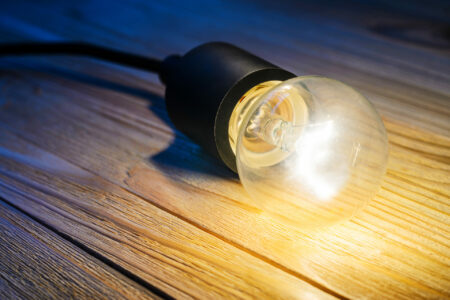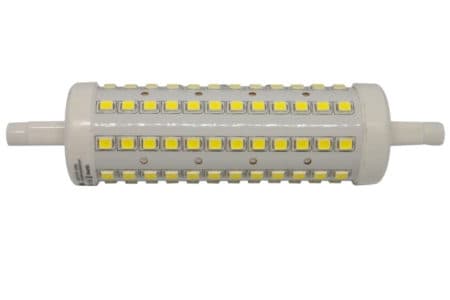Seeing all the different letters and numbers on a light bulb is confusing, especially when you don’t understand what they mean. The most common term seen on bulbs is “A19,” but what is an A19 light bulb?
The A19 light bulb is the ordinary lamp shape we all know. Generally, the terms you find written on light bulbs describe their shape and size.
Below, you’ll find everything you need to know about the A19 light bulb. So, keep reading.
What Is an A19 Light Bulb?
The A19 light bulb describes the classic shape that has been in use since the invention of incandescent light bulbs. Nowadays, Compact Fluorescent Lamps (CFL) and Light Emitting Diodes lights (LED) come in this shape too.
What Does the Term A19 Refer To?
Mainly, the name “A19” contains two parts, the letter “A” and the number “19.” The A refers to the A-series light bulb, which is the classic pear-shaped glass bulb.
Primarily, this shape has been widely used since the early 20th century for all general lighting service applications. The A-series light bulb has a pear-shaped body, and it’s usually fitted to a bayonet base or an Edison screw base.
As for the two digits in the term, they refer to the major diameter of the bulb’s body. This diameter measurement unit is one-eighth of an inch (according to U.S. measurements).
What Are the Dimensions of an A19 Light Bulb?
Since the number “19” refers to the diameter of the bulb (at the widest point) measured in 1/8 inches, this means that the A19 bulb diameter is 19/8 inches. So, it’s equivalent to approximately 2.4 inches.
In Europe and other areas of the world using the metric system, the number following the letter “A” is usually displayed in millimeters. That’s why the A19 light bulb in those regions goes by the name “A60” (2.4 inches equals about 6 centimeters or 60 millimeters).
As for the length, the A19 light bulb generally measures 3.9–4.3 inches, almost 100–110 millimeters.
Normally, the American National Standards Institute (ANSI) governs the standard dimensions of the A19 light bulb in North America. These dimensions slightly vary depending on the different bulb wattage.
Here’s a table explaining the slight differences in the A19 light bulb dimension:
| Wattage | Maximum Length (in Millimeters) | Maximum Diameter (in Millimeters) |
| 40W Type 210 | 108 | 69 |
| 40W Type 211 | 112.7 | 69.5 |
| 50W Type 206 | 100 | 68 |
| 50W Type 211 | 112.7 | 69.5 |
| 60W | 112.7 | 69.5 |
| 75W | 112.7 | 69.5 |
| 100W | 112.7 | 69.5 |
What Base Does an A19 Light Bulb Use?
According to the standards of ANSI, all A19 light bulbs must use an E26 bulb base. The E26 base is the classic Edison screw base that you recognize from all light bulb cartoon drawings.
You can easily install this base style by rotating the bulb clockwise into the fixture socket.
Although you commonly see the terms A19 and E26 together, not all light bulbs fitted with an E26 base are A19 bulbs. The E26 bulb base comes with many other A-series light bulbs as well as other lamp styles too.
The letter “E” in the term E26 refers to the base style, the Edison screw. The Number 26, on the other hand, is the diameter of the base in millimeters.
Are the A19 and the A60 Light Bulbs Interchangeable?
As previously mentioned, the A19 and the A60 light bulbs have the same dimensions, just different names. This should make them interchangeable, right?
Well, that’s not exactly true. You see, both of them have the same body measurements, but if you look closer, you’ll find that the A60 light bulbs come fitted with an E27 base.
Mainly, A60 light bulbs are used in countries where they use voltage levels of 240V. In the case of incandescent bulbs, there’s no concept of wide voltage. It’s either a bulb made for 120V or another made for 240V. So, there’s no point in trying to switch both bulbs out.
CFL and LED bulbs, on the other hand, are compatible with voltage levels of 90–240V. Since the E26 base and the E27 base dimension are close, manufacturers sometimes state that they and their sockets are interchangeable.
Sadly, this isn’t completely true. Although both bulb bases fit in both types of sockets, and they might as well work just fine, this isn’t safe to do. That’s because the installation, in this case, won’t meet the electrical safety standards, which might lead to short circuits and fires.
Different A19 Lights Bulbs
What Is an Incandescent A19 Light Bulb?
The incandescent A19 light bulb is a classic glass lamp that comes in size 19. Incandescent lamps contain a tungsten filament inside that lights up, creating incandescence.
This happens when the electrical current makes contact with the bulb’s base, sending electricity through the filament. Consequently, it creates something close to what you can call “a controlled fire.”
This lighting effect is kind of similar to burning coal or wood logs but in a more controlled environment. Therefore, when there are no particles left of the filament to burn, the light bulb burns out. Typically, the life cycle of an incandescent light bulb takes about 800–1200 hours.
Having said that, the incandescent bulb tends to produce too much heat. In fact, an ordinary incandescent light bulb produces 90% heat as opposed to 10% light. So, if you’ve ever come too close to one, which you probably have at some point, you’d know how hot it can get.
What Is an LED A19 Light Bulb?
The LED A19 light bulb came about to replace the ordinary incandescent bulb. Since the shape of the A19 bulb is what people were used to in their households, LED bulbs adopted the same style.
However, LED bulbs consume significantly less power than the incandescent bulb, almost 90% less. That’s why LED technology was revolutionary.
Basically, LED stands for Light Emitting diodes. Those diodes (semi-conducting materials) illuminate, emitting photons through electroluminescence. This happens once the electricity runs through a microchip inside the lamp.
What Is a CFL A19 Light Bulb?
CFL is an abbreviation for Compact Fluorescent Light, and this type of light bulb come in A19 style too. Whether they have an outer pear-shaped body, these light bulbs have the same dimensions as the incandescent and LED A19 bulbs.
The CFL bulb works by driving the electric current inside a tube that contains argon and a bit of mercury vapor. This, in turn, results in invisible ultraviolet light that activates the tube’s internal fluorescent coating (or phosphor). Consequently, this coating emits visible light.
This type of light bulb needs a kickstart of energy to turn it on, which should be a bit higher than usual. That’s why they come fitted with a ballast. However, once a CFL bulb lights up, it consumes 70% less energy than an ordinary incandescent bulb.
What To Consider When Purchasing an A19 Light Bulb?
When choosing a light bulb, you might get too confused with how many options you have. Mainly, there are a few factors to consider, like brightness, color temperature, and light distribution. So, here’s a guide to help you pick the right A19 bulb:
Brightness
Brightness is typically measured in metric lumens, while watts refer to the amount of energy a light bulb uses to produce such brightness. For example, a 40-watt incandescent bulb produces 450 lumens, and a 75-watt incandescent bulb produces 1100 lumens.
As for LED bulbs, when you check one of them, you’ll notice the incandescent wattage equivalent value written on it for reference (for example, 75W equivalent).
That said, it’s essential to know how many lumens you need for a specific space. This solely depends on the size of the space and the lighting requirement for what you want to do in that space. Luckily, there are many online lumens calculators out there to help you with that.
Color Temperature
Incandescent light bulbs have perfect color rendering, but they only come in one color temperature, which is the warm, yellow-toned color. LED and CFL bulbs, on the other hand, come in a variety of color temperatures that vary from warm to cool.
We usually use a Kelvin scale to measure color temperature. This scale starts at infrared (below 800°K) and ends at ultraviolet (more than 20,000°K). Most LED and CFL light bulbs come in color temperatures ranging from 2,700 to 6,000. The more the number is, the cooler the light is.
Light Distribution
Normally, an A19 incandescent light bulb has no built-in reflectors. This results in a 360° angle even light distribution, which is perfect.
Consequently, LED bulb manufacturers try to mimic the same effect. Nevertheless, some LED bulbs do a better job than others. This is where the LED filament bulb comes in handy.
This type of LED light bulb gives you the best of both worlds. It emits light as intensely as incandescent bulbs, but with the energy efficiency of an LED bulb. Plus, it mimics the same appearance, light quality, and distribution style too.






